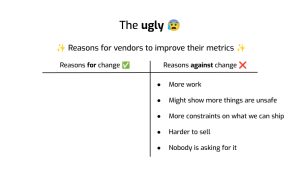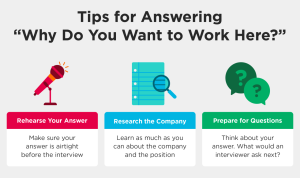Best Dating Apps with Verified Profiles have emerged as a crucial innovation in the quest for meaningful relationships in today’s digital age. As individuals increasingly turn to online platforms for connections, the reliability of user profiles has become paramount to ensure safety and authenticity. This overview delves into the significance of verified profiles, exploring how they enhance user experience and foster trust in an often unpredictable dating landscape.

By implementing verification processes, these apps not only protect users from scams but also promote genuine interactions. The landscape of dating applications is rapidly evolving, with numerous options available that cater to diverse preferences and needs. Understanding the nuances of these verified platforms can significantly impact the success of finding a compatible partner.
In the digital age, social media has emerged as a formidable force shaping the way people communicate. The advent of platforms such as Facebook, Twitter, Instagram, and Snapchat has revolutionized interpersonal interactions, facilitating real-time communication across diverse geographical boundaries. This article delves into the multifaceted influence of social media on modern communication, exploring its implications, benefits, and potential drawbacks.
Understanding Social Media as a Communication Tool
Social media can be defined as a collection of online platforms and applications that enable users to create, share, and engage with content and connect with others. The primary function of these platforms is to facilitate interaction among users, allowing for the exchange of ideas, information, and experiences. The immediacy and accessibility afforded by social media have transformed traditional communication paradigms, leading to a shift from face-to-face interactions to digital engagements.
The Benefits of Social Media Communication
1. Enhanced Connectivity
One of the most significant advantages of social media is its capacity to enhance connectivity. Individuals can maintain relationships with friends and family regardless of physical distance. This connectivity fosters a sense of belonging and community, as people can share life events and experiences instantaneously. For instance, platforms like Facebook allow users to post updates, share photos, and interact with others’ content, thereby strengthening bonds and fostering social networks.
2. Instant Communication
The ability to communicate instantly has been one of the hallmarks of social media. Unlike traditional forms of communication that may involve delays—such as postal mail or even email—social media allows for immediate engagement. Whether it’s sending a tweet, commenting on a post, or utilizing messaging features, users can converse in real-time. This immediacy has implications for both personal and professional interactions, allowing for swift decision-making and timely responses.
3. Global Reach and Cultural Exchange
Social media transcends geographical boundaries, enabling users to connect with individuals from various cultural backgrounds. This global reach fosters cultural exchange and awareness, as users are exposed to diverse perspectives and ideas. For example, social media campaigns may raise awareness about global issues, facilitating conversations that transcend local contexts and encouraging cross-cultural understanding. The ability to share and promote cultural content, such as music, art, and traditions, is a pivotal aspect of this exchange.
The Challenges of Social Media Communication
1. Miscommunication and Misinterpretation
While social media promotes connection, it is also fraught with potential pitfalls, particularly in terms of miscommunication. The absence of non-verbal cues, such as tone of voice and facial expressions, can lead to misunderstandings. Text-based communication may be interpreted differently based on individual perceptions and contexts, resulting in conflicts or misinterpretations of intent. For instance, sarcasm or humor may not translate well in written form, leading to unintended offense or confusion.
2. Information Overload
The vast amount of information available on social media can be overwhelming, leading to information overload. Users are often bombarded with a continuous stream of updates, posts, and notifications, making it challenging to discern important information from noise. This overwhelming influx can lead to cognitive fatigue and may hinder effective communication. Moreover, the constant exposure to curated content can distort perceptions of reality, as users may compare themselves to idealized portrayals of others.
3. Privacy Concerns
Privacy is a significant concern in the realm of social media communication. Users often share personal information and experiences, potentially exposing themselves to various risks, including identity theft, cyberbullying, and harassment. The public nature of many social media platforms means that users may inadvertently share information that can be exploited by malicious actors. Furthermore, the permanence of online content raises questions about digital footprint and the long-term implications of shared information.
The Role of Social Media in Professional Communication: Best Dating Apps With Verified Profiles
Beyond personal interactions, social media has also permeated professional communication. Businesses and organizations leverage social media platforms to engage with customers, market products, and establish brand identity. The interactive nature of social media allows companies to receive real-time feedback from consumers, fostering a sense of community and loyalty.
1. Marketing and Brand Engagement
Social media has revolutionized marketing strategies, shifting away from traditional advertising toward more interactive and engaging approaches. Brands can utilize platforms like Instagram and Twitter to showcase their products, share behind-the-scenes content, and engage with customers directly. This direct interaction fosters a more personal connection between brands and consumers, enhancing customer loyalty and trust.
2. Networking Opportunities, Best Dating Apps with Verified Profiles
Professional networking has been transformed by social media platforms like LinkedIn, which facilitate connections among professionals across industries. Users can showcase their skills, experiences, and achievements, making it easier to connect with potential employers or collaborators. Additionally, social media allows for the sharing of industry-related content, fostering professional development and knowledge sharing.
Future Trends in Social Media Communication
As technology continues to evolve, so too does the landscape of social media communication. Emerging trends indicate a shift toward more immersive and interactive forms of engagement. Virtual reality (VR) and augmented reality (AR) technologies are beginning to influence how users connect and share experiences. These technologies may offer new dimensions to social media interactions, allowing users to engage in more authentic and experiential ways.
1. The Rise of Video Content
Video content is rapidly gaining prominence on social media platforms, with users increasingly favoring visual storytelling over text-based posts. Platforms like TikTok and Instagram Reels have popularized short-form video content, encouraging users to express themselves creatively. This trend is likely to continue, shaping communication styles and preferences as users adapt to more dynamic and visually engaging formats.
2. Increased Focus on Mental Health and Well-being
As awareness of mental health issues rises, there is a growing emphasis on fostering positive online environments. Social media platforms are beginning to implement features aimed at promoting mental well-being, such as content moderation, anti-bullying measures, and resources for users in distress. This shift reflects a recognition of the impact that social media can have on mental health and the importance of creating supportive online communities.
Conclusion
In summary, social media has fundamentally transformed modern communication, offering both opportunities and challenges. While it enhances connectivity, facilitates instant communication, and fosters cultural exchange, it also presents issues related to miscommunication, information overload, and privacy concerns. As social media continues to evolve, its impact on personal and professional communication will undoubtedly shape the way individuals interact in the future.
It is essential for users to navigate this landscape mindfully, harnessing the benefits while remaining vigilant about the associated risks.






